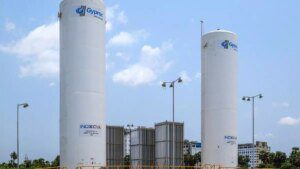Groundwater quality in India shows significant variability across different states and union territories, according to a recent report from the ‘Jal Shakti’ ministry. Regions such as Arunachal Pradesh, Mizoram, Meghalaya, and Jammu & Kashmir have been reported to fully comply with Bureau of Indian Standards (BIS), while states like Rajasthan, Haryana, and Andhra Pradesh struggle with extensive pollution issues.
The assessment included quality data gathered from 15,259 groundwater monitoring sites, focusing on detailed evaluations at 4,982 trend stations throughout the country in 2023. One alarming finding from this report is the presence of elevated uranium levels in various regions, particularly in Rajasthan and Punjab, identified as hotspots for uranium contamination.
High concentrations of uranium were particularly noted in areas designated as ‘over-exploited,’ ‘critical,’ and ‘semi-critical’ stress zones for groundwater, which include states such as Rajasthan, Gujarat, Haryana, Punjab, Tamil Nadu, Andhra Pradesh, and Karnataka. Additionally, the report underscored substantial quality concerns in groundwater due to elevated levels of nitrates, fluoride, arsenic, and iron. Almost 20% of the tested samples surpassed permissible nitrate levels, and 9% exhibited fluoride concentrations above acceptable limits. Arsenic contamination was recorded in approximately 3.5% of the samples.
The implications of these contaminants are significant, as prolonged exposure to both fluoride and arsenic can lead to serious health issues, including fluorosis from fluoride exposure and potential cancer or skin lesions from arsenic. Rajasthan, Haryana, Karnataka, Andhra Pradesh, and Telangana are highlighted as states with concerning fluoride levels. Even with improvements brought about by the monsoon season, the overall levels of fluoride contamination remain critically elevated in these areas.
Nitrate pollution is notably high in Rajasthan, Tamil Nadu, and Maharashtra, where over 40% of water samples tested positive beyond permissible limits. The primary culprit for this rampant contamination is attributed to agricultural runoff and excessive fertilizer application.









